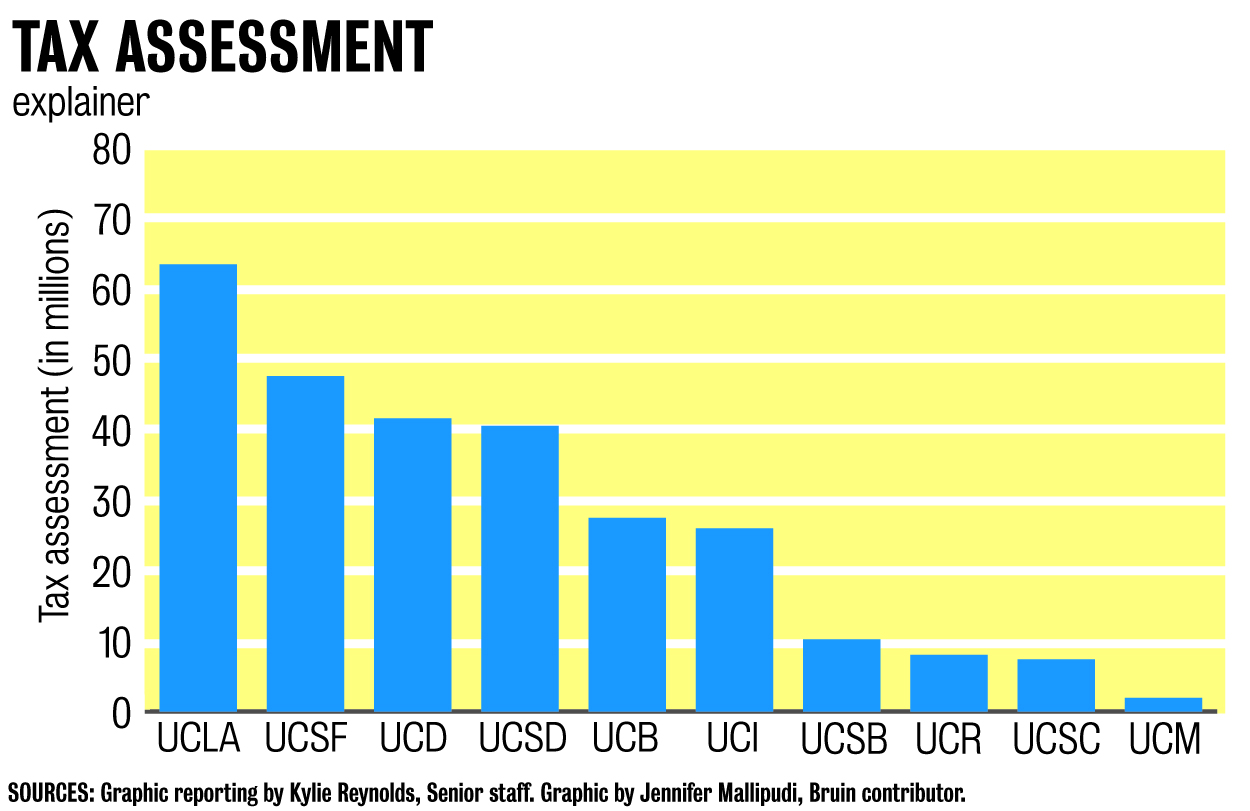Funding streams plan has had unintended results for UCLA

- UC to revise long-term budget plans
- Extra UC funding to be allotted for rebenching
- Funding streams plan has had unintended results for UCLA
- Revision of UC-wide enrollment goals may impact fund distribution
By Kristen Taketa
Feb. 12, 2013 12:41 a.m.
The original version of this article contained an error and has been changed. See the bottom of the article for additional information.
Up until two years ago, part of a UCLA student’s tuition could be used to fund any number of unrelated costs – such as the salary of a UC Riverside professor or the services provided at UC San Francisco’s medical center.
For many years, the UC Office of the President pooled campus-generated revenues – like tuition and application fees – from the campuses, kept some to pay for its own operations and then redistributed the rest among the campuses.
But how the office, which oversees University operations and handles various systemwide projects, decided the amount each campus would receive was not clear, said Jean-Bernard Minster, chair of the UC Committee on Planning and Budget.
In 2011-12, the UC administration began allowing campuses to keep their revenues and instead started collecting a 1.6 percent tax of all the campuses’ total expenditures, as part of an initiative called “funding streams.”
The plan was the first step of the UC’s budget reform. It was intended to encourage campuses to increase their revenue, make the UC budget process more transparent and give campuses flexibility in how they spend their revenues, said UC spokeswoman Shelly Meron.
“(Funding streams) was negotiated to be as fair as possible and a lot simpler than before,” Minster said. “What happened before was so complicated. Nobody could explain (it).”
The UC Office of the President, which has a budget of $557.7 million, currently takes about $274 million from UC campuses to fund its operations.
This year, UCLA paid the UC $63 million – about 24 percent of all revenue collected through the funding streams tax.
But the change has had some unintended effects on UCLA, said Steven A. Olsen, vice chancellor of finance, budget and capital programs.
In 2011-2012, the first year the funding streams tax was collected, the state cut $650 million from the UC budget, which prompted a 9.6 percent tuition increase, Olsen said. UCLA had to pay $65 million to the UC for the tax, and lost millions of dollars in state funds that year. The campus ended up losing money because it did not receive enough back in UC funds to make the change break even.
UC spokeswoman Dianne Klein acknowledged that campuses may still be struggling to adjust to Funding Streams, especially since state funding has declined in recent years.
“But now that it appears the state is reinvesting in higher education, some of these concerns might be mitigated,” she said.
In the first year of the funding streams tax, the UCLA chancellor’s office paid the tax out of its central reserves. But this year, UCLA administration decided to pay the $63 million tax to the UC by taking it from all of UCLA’s departments – from academics to athletics and the medical center.
UCLA officials are currently discussing ways to minimize the burden of the tax on UCLA’s departments. Olsen said officials plan to decide in March how UCLA will pay the tax next year.
Correction: The UC administration taxes campuses’ total expenditures.

